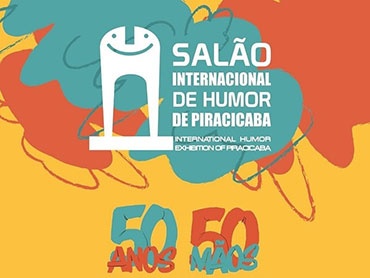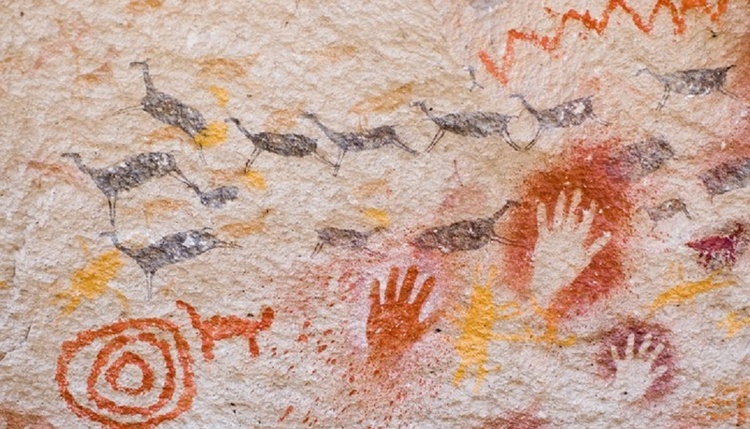
Argentine Painting
Argentine painting refers to the entire pictorial production produced in Argentina over time. Like its sculpture, Argentine painting draws on innovative styles with European and Amerindian influences.
The third decade of the 20th century represented a fundamental stage in the development of painting, with major events related to new aesthetic orientations taking place. For this reason, the period between 1920 and 1930 is considered the formative period of modern Argentine painting, with exponents such as Antonio Berni, Gyula Kosice—founder of the Madí Movement, the New Argentine Figuration movement—Raúl Soldi, and León Ferrari; and exponents of popular painting such as Florencio Molina Campos and Benito Quinquela Martín.
Prehistory
Throughout the northern half of Santa Cruz province, painted hands have been found on rock faces next to overhangs that protected Paleolithic hunters who stalked their prey from there between 12,000 and 9,000 years ago. The technique involved placing the hand pre-colored with red, white, black, or blue paint, derived from colored earth and colorful fruits. The hand was placed against the wall and the coloring liquid was spat out from the mouth, dispersing and pulverizing like a spray can. The location where the hand was found appears with the colors of the original rock, while the surrounding surface appears colored, highlighting the perfectly separated fingers.
By far, the site with the largest stretches of rock covered by hands is the so-called Cave of the Hands, in the Pinturas River canyon, in the northeast of Santa Cruz province. In reality, it is simply a series of overhangs. It is considered one of the masterpieces of Paleolithic painting in Argentina and has been declared a World Heritage Site by UNESCO.
Another important pictorial record of prehistory is located in northern Córdoba and constitutes one of the pictographic testimonies with the highest image density in the world, with more than 35,000 pictographs located on the Colorado, Veladero, Intihuasi, and Desmonte hills.
Petroglyphs exist along all the foothills of the Andes Mountains up to the Strait of Magellan. Today they can be found in Yavi, very close to Bolivia, passing through the north-central provinces such as Catamarca, those in the center such as Córdoba,[5] northern Patagonia, as in the case of Victoria Island, in Lake Nahuel Huapi, and as far north as the Strait of Magellan.
Source

- January 07, 2026
Andean Four-Cornered Hats
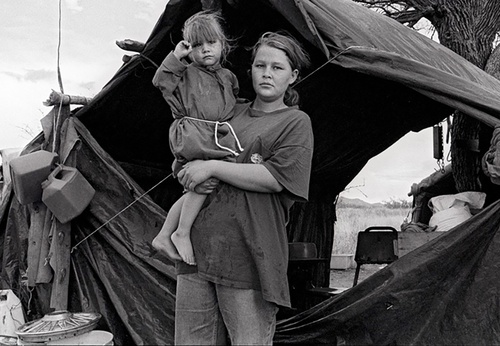
- January 07, 2026
US–Mexico Border | Photography Project by Laura Wilson (USA)

- January 07, 2026
Material Art Fair 2026
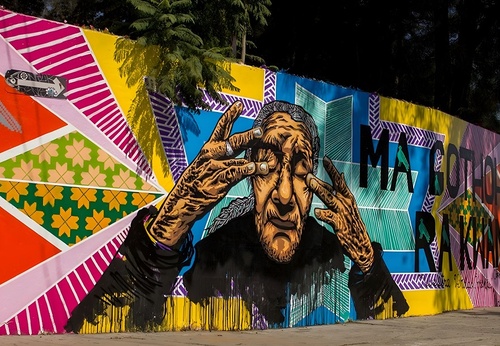
- January 07, 2026
Languages, Aesthetics, and Meaning of Contemporary Urban Art
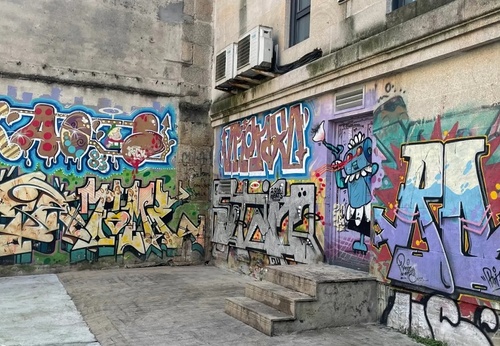
- January 07, 2026
Street Art as a Form of Social and Cultural Expression
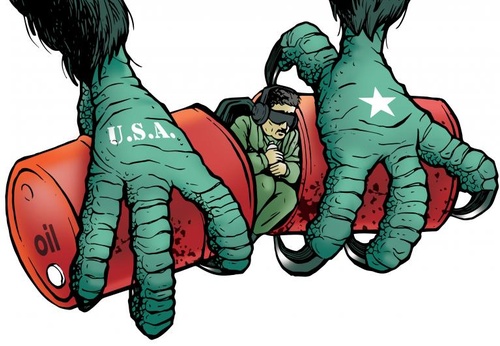
- January 07, 2026
Snatched
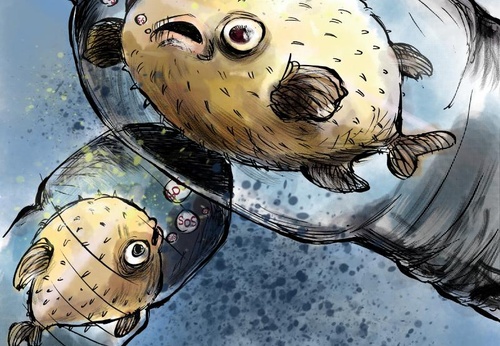


- January 06, 2026
Jade in Ancient Costa Rica

- January 07, 2026
Languages, Aesthetics, and Meaning of C…

- January 07, 2026
Street Art as a Form of Social and Cult…

- January 06, 2026
Symbolism and Spirituality in Latin Ame…

- January 06, 2026
Sacred Art in Latin America: Meeting be…

- January 05, 2026
The Importance of Art in Society

- January 04, 2026
Graphic Art: Much More Than an Image, a…

- January 04, 2026
The Future of NFTs and AI-Generated Art

- January 01, 2026
Human Creativity vs. Algorithmic Creati…

- January 01, 2026
The Role of AI in the Preservation of C…

- December 31, 2025
Smart Museums: Artistic Experiences wit…

- December 31, 2025
Ethical Challenges of Machine-Created A…

- December 30, 2025
Generative Art: From Code to Gallery

- December 30, 2025
How Artificial Intelligence Is Redefini…

- December 29, 2025
Artificial Intelligence and the Reconfi…

- December 29, 2025
The Artificial Intelligence Revolution …

- December 28, 2025
The Difference Between Contemporary Art…

- December 28, 2025
The Impact of Contemporary Art on Today…

- December 28, 2025
Contemporary Art and its Multiple Langu…

- December 27, 2025
Graffiti: Urban Voices That Tell Stories

- December 27, 2025
The Art of Graffiti: Expression, Identi…

- August 29, 2023
The history of Bolivian art

- February 19, 2024
Analysis and meaning of Van Gogh's Star…

- January 28, 2024
Culture and Art in Argentina

- September 25, 2023
What is the importance of art in human …

- September 23, 2023
What is paint?

- August 23, 2023
The 11 types of art and their meanings

- August 10, 2023
14 questions and answers about the art …

- September 23, 2023
Painting characteristics

- August 30, 2023
First artistic manifestations

- January 12, 2024
10 most beautiful statues and sculpture…

- September 23, 2023
History of painting

- March 26, 2024
The importance of technology in art1

- July 13, 2024
The impact of artificial intelligence o…

- March 26, 2024
Cultural identity and its impact on art…

- April 07, 2024
Graffiti in Latin American culture

- April 02, 2024
History visual arts in Brazil

- August 16, 2023
The 15 greatest painters in art history

- April 06, 2024
History of visual arts in Ecuador

- October 18, 2023
History of sculpture

- March 05, 2024
The art of sculpture in Latin America

- February 19, 2024
Analysis and meaning of Van Gogh's Star…

- August 13, 2023
9 Latino painters and their great contr…

- August 23, 2023
The 11 types of art and their meanings

- August 10, 2023
14 questions and answers about the art …

- August 27, 2023
15 main works of Van Gogh

- August 29, 2023
The history of Bolivian art

- January 28, 2024
Culture and Art in Argentina

- November 06, 2023
5 Latin American artists and their works

- September 23, 2023
Painting characteristics

- September 23, 2023
What is paint?

- September 25, 2023
What is the importance of art in human …

- March 26, 2024
Cultural identity and its impact on art…

- August 30, 2023
First artistic manifestations

- December 18, 2023
10 iconic works by Oscar Niemeyer, geni…

- January 20, 2024
What is the relationship between art an…

- January 12, 2024
10 most beautiful statues and sculpture…

- August 24, 2023
The most famous image of Ernesto "Che" …

- October 30, 2023
Characteristics of Contemporary Art

- May 26, 2024
Técnicas de artes visuais

- August 22, 2023

